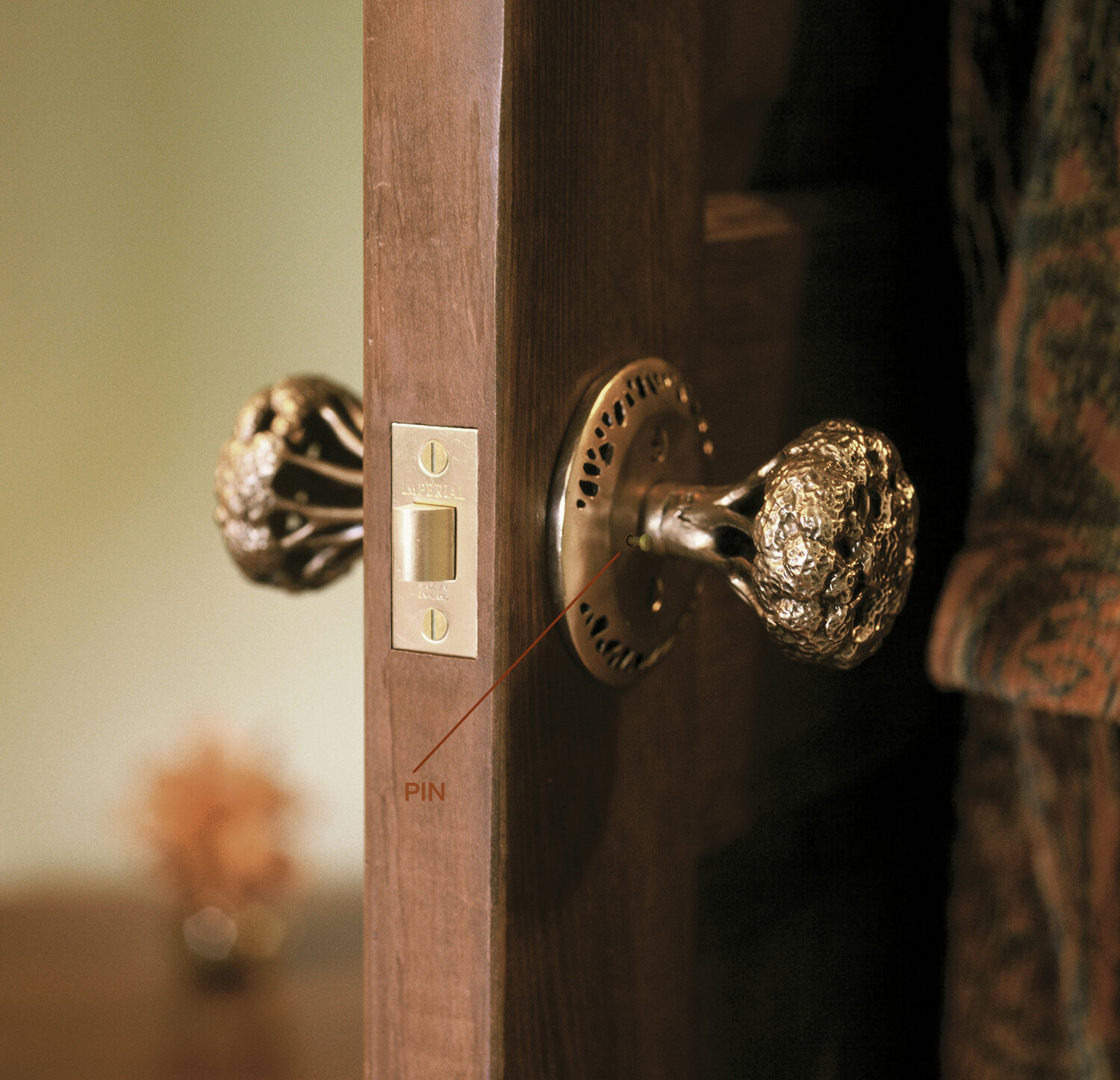A passage door knob also called passageway door knob is typically used as an interior door knob to open and close a door. While a passage way door knob can be used as an entry door handle, as it does not lock, it is obviously limited in use to doors that open on to secure area such as a walled courtyard or garden
A passage knob set has 2 knobs connected by a metal shaft or spindle that passes through the door and through the latch mechanism inside the door. The spindle is attached to each knob with a small set screw that is screwed into the side of the knob collar. We use an Allen style setscrew which is slightly recessed but effectively flush with the collar and unobtrusive. The spindle is typically an 8mm square rod though some manufacturers use a 7mm rod that they position at 45 degree which is why they are referred to as spindles “on the diamond”. The spindle passes through the door latch though a universal hole that is machined so that it can be used with a square 8mm or 7mm spindle.
The spindle is one continuous rod for a passage latch but is split into 2 sections for a privacy latch.
How a door knob works with a passageway latch
When a passageway door is closed it is held in place by the tongue of the latch that extends into the strike plate on the door jamb. Turning the knob clockwise or anti-clockwise retracts the latch pulling it out of the strike plate and into face-plate of the door. New doors are usually manufactured with a 2” hole for the latch and a drilled round channel for the latch-tongue. The end of the channel is typically finished with a rectangular cut out which is capped by a metal face-plate that comes with the door latch. If the door is bought with the jamb, then the rectangular hole for the strike plate will also be pre-cut.
A passage way latch has just one functioning cog wheel with flat areas and small 1/16” protruding teeth. Either knob can turn the spindle and in so doing turn the cog to a flat or protruding tooth section. The cog teeth put pressure on the latch and throw it forward into the jamb. In reality the latch sits in a small metal box, and both have springs which make for a smooth action that requires little hand pressure. When the spindle turns the cog to a flat section the pressure on the latch and compressed springs is released and the latch moves back and is retracted.
How a door knob works with a privacy push pin latch
The spindle is now split and there are 2 cogs, one as described above functions to open and close the door by retracting and releasing the spring-loaded latch. The second cog also has a flat perimeter with one recessed section. When the cog is turned to the flat section the pin is pushed forward into back of the latch thereby fixing the tongue in an extended locked position. When the cog is turned to the recessed section, the pin is pulled back and the latch is released. Only the inner knob connects with the pin cog making the lock operative from only the inside. The door can be released either by pulling the pin out or by turning the knob.
There is a small hole in the rose of the outer door knob which can be used in an emergency to release the latch. In this event a small piece of metal can be inserted into the hole to push the pin out thus freeing the knob so that the door can be opened from the outside.



